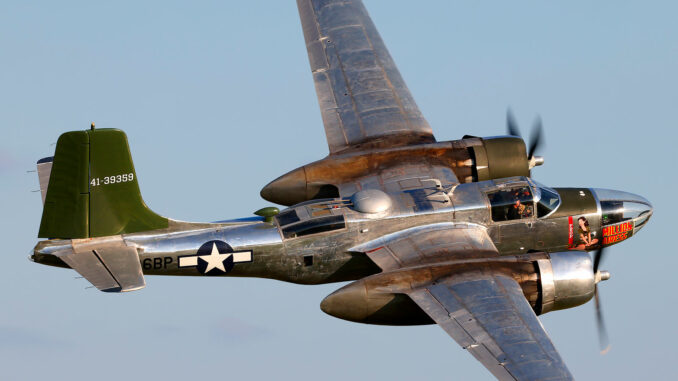
French air strategy at Dien Bien Phu in 1954: initial plan, fighter planes deployed, actual effectiveness, limitations, and impact on defeat.
The Battle of Dien Bien Phu (1954) was a turning point in the Indochina War, sealing France’s defeat despite its clear air superiority. The French command had developed an ambitious air strategy to support this isolated entrenched camp in northern Tonkin. It planned to use a logistical air bridge and fire support from the sky to compensate for the distance and numerical inferiority of the ground troops.
This article provides a detailed technical analysis of the air strategy planned by the French: it describes the initial plan (objectives and principles), the fighter aircraft and other aircraft involved (models, specific roles, performance, numbers), and then assesses the actual effectiveness of these air assets against the Việt Minh forces, explaining the limitations encountered and the gap between theory and reality on the ground. Finally, it examines the operational consequences of these air choices on the course of the battle and on the French defeat, with supporting figures. Written in a neutral and professional style, the article is intended for a specialist audience wishing to gain an in-depth understanding of the aeronautical issues at stake in Dien Bien Phu.
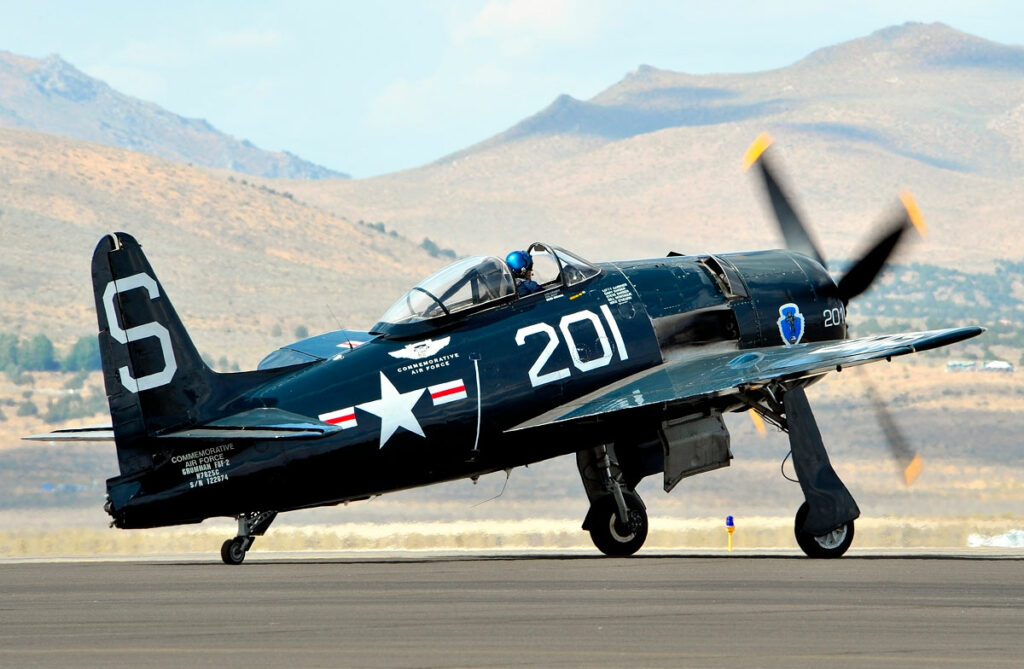
The air strategy planned by the French command
As soon as the decision was made to establish a fortified camp at Dien Bien Phu in late 1953 (Operation Castor), the French military authorities relied on air superiority to support the position. The general staff planned to resupply the garrison exclusively by air using the Muong Thanh airstrip and massive parachute drops. After tough negotiations between the commands, the Air Force agreed to transport around 65 tons of equipment per day as long as the runway remained operational. This considerable volume was intended to cover the food, ammunition, and reinforcement needs of around 15,000 defenders. The concept was partly based on the model used at the Na San camp (1952), where an isolated stronghold had held out thanks to air supplies.
Confident, the French believed that the Việt Minh had no significant anti-aircraft capabilities and that any enemy artillery would be quickly neutralized by counter-battery fire and targeted air strikes. The French air force believed it had free rein in the skies: there were no enemy air forces and the topography seemed to prevent the enemy from bringing heavy guns to bear on the hills. The strategic objective was twofold: to lure Võ Nguyên Giáp’s divisions into this isolated basin and crush them with the combined firepower of artillery and aviation, and to cut off their supply routes to Laos through air interdiction.
In concrete terms, the plan called for observation aircraft to locate concentrations of Việt Minh troops or artillery pieces so that bomber and attack aircraft could destroy them before they threatened the camp. Fighter-bombers were also to harass the roads used by the enemy to bring reinforcements and supplies to Diên Biên Phu. This theoretical air strategy, centered on an aerial “umbilical cord” and constant fire support from the sky, was based on the belief that French air superiority could be deployed without major obstacles. In short, Paris hoped that a fortress supplied by air and protected by its air force could hold out indefinitely against a numerically superior enemy.
Fighter planes, bombers and transport aircraft deployed
To implement this strategy, France deployed a range of aircraft with complementary missions to Indochina. The fighter force included the Grumman F8F Bearcat, a US Navy carrier-based fighter from the end of the Second World War, used here as a land-based fighter-bomber. The Air Force’s 1/22 “Saintonge” fighter group operated these Bearcats in support of the entrenched camp, even basing them on the Diên Biên Phu runway at the start of the battle. At the same time, the French Navy (Aéronavale) deployed the 11F flotilla equipped with a dozen Grumman F6F Hellcats, another American carrier-based fighter, also used in ground attack.
These fighter planes carried heavy 12.7 mm machine guns (or 20 mm cannons depending on the version) and 5-inch air-to-ground rockets, as well as 250 kg bombs or napalm cans. Their role was to provide close air support to ground troops and to carry out interdiction missions: strafing exposed Việt Minh units, dive-bombing identified artillery positions, and attacking enemy logistics columns on the tracks leading to the basin. At Diên Biên Phu, these fighter-bombers frequently flew low over the ridges to strafe enemy positions with projectiles. They also dropped napalm, a new incendiary weapon supplied by the Americans, designed to set fire to vegetation and destroy bunkers and camouflaged guns.
In support of these attack aircraft, the Air Force deployed Douglas B-26 Invader medium bombers (French designation A-26). These twin-engine, long-range aircraft took off from bases near Hanoi and Hải Phòng and could carry up to 2.7 tons of bombs. They operated day and night to pound Việt Minh positions around the entrenched camp, including with napalm bombing. On November 20, 1953, during Operation Castor, these B-26s had already played a crucial role in dropping bombs to prepare for the initial parachute drop. During the siege, they regularly intervened on enemy lines, although without radar guidance (bombing was carried out by visual navigation or dead reckoning). In addition, the Naval Air Force still had a few Douglas SB2C Helldiver dive bombers from the 3F fleet, inherited from 1945, which carried out sporadic attacks at the beginning of the campaign.
The third essential component was transport aviation, the backbone of the camp’s supply system. The venerable C-47 Dakota (a militarized DC-3) was the workhorse of French air transport, with around 60 of these aircraft present in Indochina. Capable of carrying ~2.7 tons of cargo or 28 paratroopers, the C-47 provided rotations between Hanoi and Dien Bien Phu as long as the runway was passable, and otherwise carried out parachute drops. Once the Viet Minh assault began, it became too dangerous to land aircraft in Muong Thanh, so pilots switched to airdrop mode. To increase delivery capacity, France also received American-made Fairchild C-119 Flying Boxcar four-engine cargo planes. Under mutual assistance agreements, around 30 C-119s were loaned by the US Air Force in early 1954, some with integrated American crews (volunteers from CAT, Civil Air Transport, a company unofficially linked to the CIA).
These large aircraft (carrying up to 30 passengers or 12,000 kg of cargo) were modified to drop supplies and napalm cans. Painted in French colors to maintain secrecy, they were flown jointly by French crews and experienced American mercenaries. During the battle, no fewer than 37 American pilots from the CAT took part in these clandestine missions, based at Hải Phòng Cat Bi airfield. This entire transport fleet carried out an intensive airlift: more than 680 sorties were flown by American pilots alone between March 13 and May 6, 1954, dropping thousands of tons of equipment. Every night, “trains” of C-47s and C-119s converged on Diên Biên Phu. They often arrived in formation to overwhelm the enemy’s defenses and dropped containers of food, ammunition, medicine, fuel, and sometimes even human reinforcements (paratroopers).
Light Broussard and Morane aircraft also provided last-minute connections and improvised medical evacuations at the beginning. In short, from March to May 1954, France committed virtually its entire Indochina air force to the battle: fighters and bombers to support the troops and destroy the enemy, transport aircraft to keep the position supplied. This was a considerable effort, and the crews operated at the extreme limits of their logistical and technical capabilities.
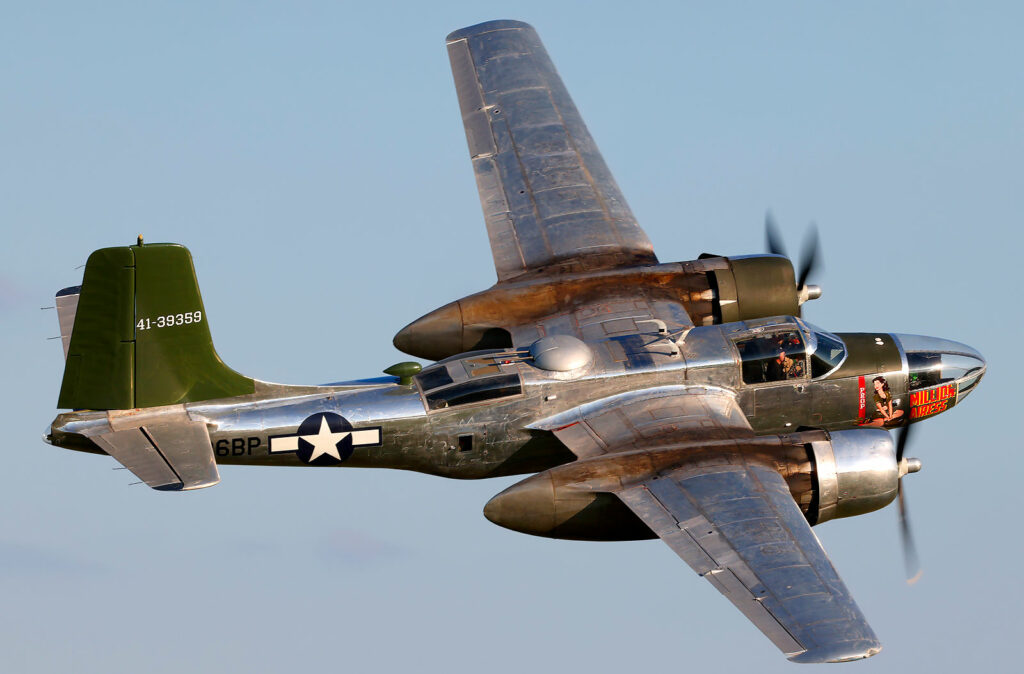
The gap between theory and reality on the ground
Despite the apparent strength of this air force, the reality of the battle of Dien Bien Phu cruelly exposed its limitations. Firstly, the enemy had much more effective anti-aircraft defenses than expected. Contrary to initial estimates, General Giáp had deployed several regiments of anti-aircraft guns supplied by Communist China (including 37 mm automatic guns and numerous 12.7 mm DShK heavy machine guns) around the basin. On March 11, 1954, even before the main ground assault, Việt Minh artillery fire managed to destroy six F8F Bearcat fighter planes on the ground at the Diên Biên Phu airfield.
This event, which took the defenders by surprise, immediately illustrated the vulnerability of French aviation in the face of skillfully positioned and camouflaged artillery. The Viet Minh anti-aircraft batteries were concealed in casemates dug into the mountainside, with guns that could be brought out to fire a few shots before retreating back into cover. This made it very difficult for French observation aircraft to spot these guns, and even more difficult for the artillery or bombers to silence them. The French Navy’s dive bombers and conventional aerial bombardments made no difference. Colonel Piroth, head of the French artillery, distraught by this inability to neutralize the enemy artillery, committed suicide in his bunker on March 15.
Then, the transport aviation came under increasing pressure. The airfield at Muong Thanh, vital for landings, came under enemy fire in mid-March. On March 16, the Việt Minh positioned automatic weapons within range of the runway, making it extremely dangerous. The last cargo plane to land or take off from Diên Biên Phu did so on March 27, 1954. After that date, the “air route” existed only through parachute drops. The loss of the runway meant that all supplies had to be dropped from the sky, which reduced logistical efficiency: a plane dropping supplies could carry less than it could land with, and, more importantly, the packages could land out of reach of the defenders.
This is precisely what happened: a worrying proportion of the containers dropped by parachute ended up in the Việt Minh lines or in no man’s land. For example, under the direct supervision of General Navarre, 120 tons of equipment were dropped on May 2 in a desperate effort, but 50% of these resources were lost outside the French perimeter. The little that did reach the garrison was only enough to prolong the resistance for a few more days in terms of food and ammunition. This enormous loss was due to a combination of factors: the relative accuracy of the drops (especially at night or in bad weather), enemy sabotage (some containers were targeted in flight or on the ground), and the gradual reduction of the area held by the French (meaning an increasingly restricted and contested reception area).
Weather and geographical conditions also complicated the use of aircraft. From the end of March, the monsoon set in in northwestern Tonkin, bringing torrential rain and low cloud cover that became almost permanent. Support aircraft had to operate on sight, as they did not have effective ground guidance or sophisticated on-board radar for all-weather bombing. However, a thick cloud cover frequently blanketed the Dien Bien Phu basin, hampering visual identification of ground targets. French pilots, often forced to attack “by eye”, dropped their bombs and napalm cans approximately over the areas reported by radio, but with limited effectiveness. The rugged terrain (mountain ranges surrounding the valley) also imposed mandatory approach corridors, where enemy anti-aircraft defenses were able to concentrate their fire.
Approaching at low altitude for precision bombing meant exposing oneself to anti-aircraft guns hidden on the heights. Several French aircraft were shot down in these hazardous attack runs. Conversely, operating at high altitude to avoid anti-aircraft fire reduced accuracy to almost zero. This tactical dilemma severely hampered the effectiveness of air support. In addition, as the French air bases were relatively far away, the aircraft had to travel more than 600 km to reach Dien Bien Phu, arriving at the limit of their fuel range. A Bearcat fighter, for example, after such a journey, could only remain over the target for a few minutes before having to return to refuel. This drastically limited the amount of continuous close support that the air force could provide to ground troops. B-26 bombers, with their greater endurance, could orbit a little longer, but their nighttime use remained unpredictable. Giáp exploited these limitations intelligently: most of his infantry assaults were launched at night, when French aircraft could only operate with difficulty (dropping flares and blind bombing). This tactic deprived the entrenched camp of a major advantage during the decisive battles.
In short, the gap between theoretical air strategy and the reality on the ground at Dien Bien Phu proved to be huge. Unforeseen factors – the intensity of Vietnamese anti-aircraft fire, the enemy’s skill in concealing their forces, deteriorating weather, and problems with distance and range – largely neutralized French air superiority. Air support, which was supposed to be decisive, failed to halt the advance of the Việt Minh trenches around the strongholds or to suppress their fire. The French crews showed remarkable courage in facing these conditions (some flying several sorties a day under fire), but the balance of power on the ground changed little. The concrete results were disappointing: although more than 10,000 tons of bombs and ammunition were dropped on the enemy during the siege (estimate), the Việt Minh forces remained operational until the end, while air supplies to the camp gradually collapsed.
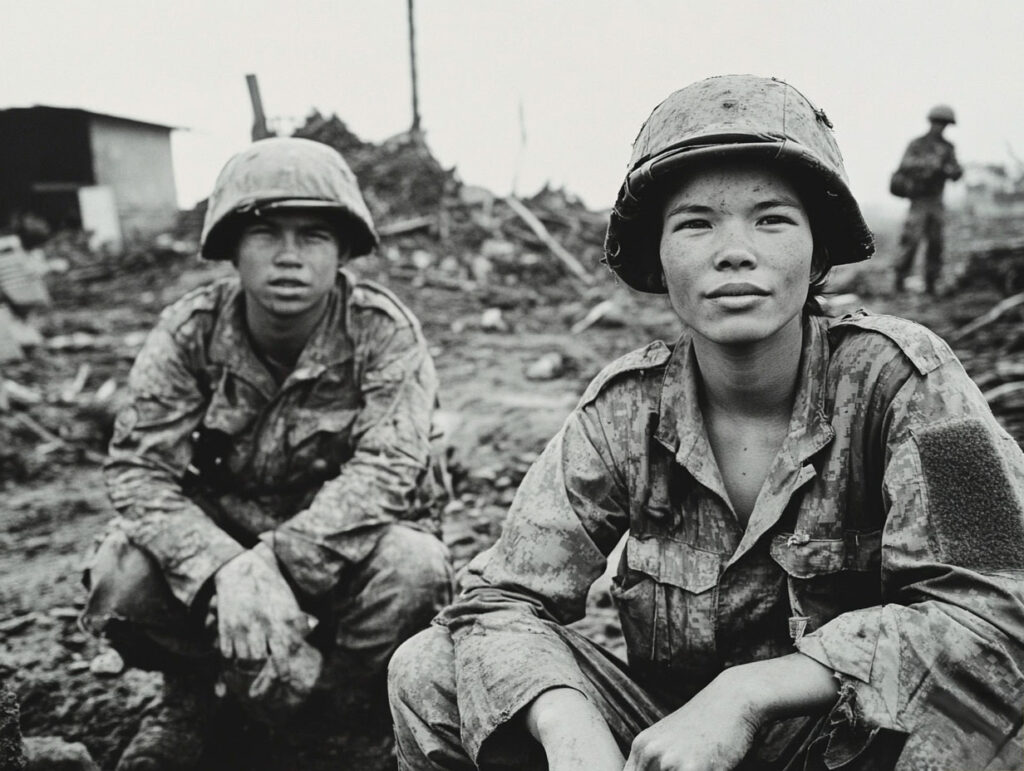
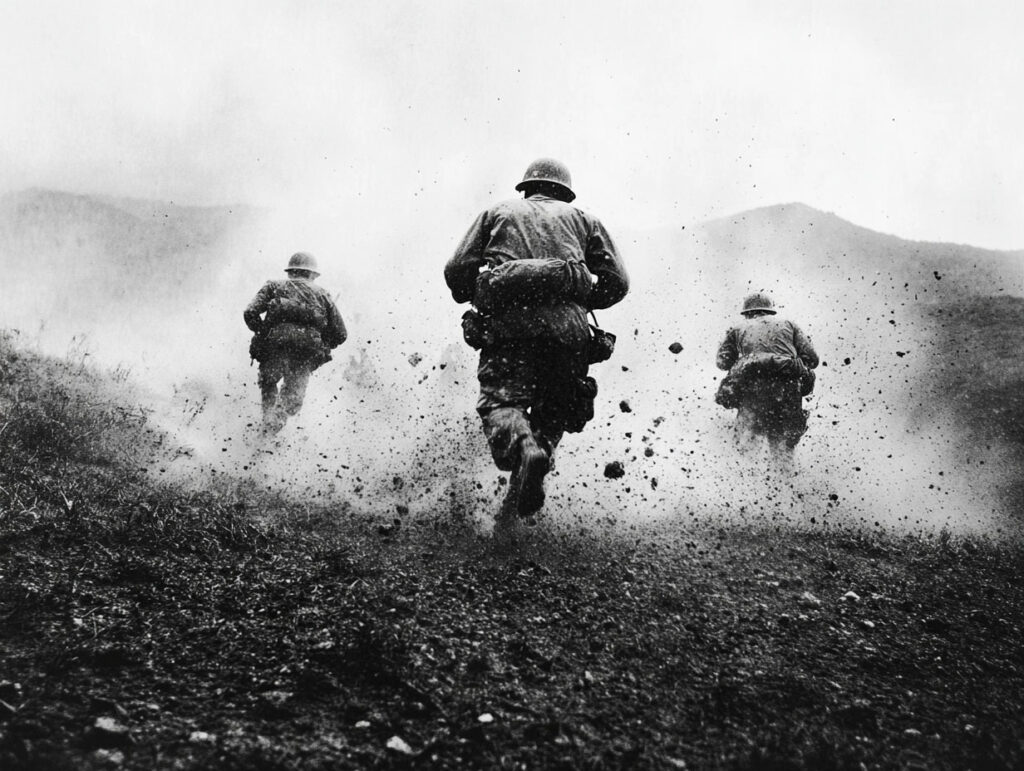
The operational consequences of the French defeat
The relative failure of the French air strategy had direct consequences on the outcome of Diên Biên Phu. Deprived of sufficient logistical support once the runway was unusable, the garrison found itself besieged without adequate supplies. By the end of April 1954, supplies were dangerously low: on May 5, the defenders had only three days’ worth of food left and their artillery ammunition was almost exhausted. The French batteries had to ration their fire due to a lack of shells, while Giáp’s batteries continued to receive supplies and reinforcements without being neutralized. The air blockade imposed by the Việt Minh’s anti-aircraft defenses was so effective that even the evacuation of the seriously wounded by medical aircraft became impossible (after March 27, hundreds of wounded were crammed into the camp’s makeshift hospital, worsening the human toll).
The morale of the troops suffered, even though the units fought fiercely. Furthermore, the lack of control of the skies at critical moments (night attacks, overcast weather) left the French strongholds virtually on their own in the face of waves of assaults. The air force, in theory the armed wing capable of breaking any massive attack, was unable to prevent the gradual submersion of the peripheral strongholds (Béatrice, Gabrielle, Huguette, Éliane, etc.). Each night, the Việt Minh trenches moved a little closer, nibbling away at the ground without being stopped by the bombardments. The imbalance in firepower was even reversed in some places: when the French artillery fell silent due to a lack of ammunition, only bombs dropped blindly continued to support the troops, with very random effectiveness.
The losses suffered in the air were another indicator of the strategic setback. In total, the French lost 62 aircraft destroyed and around 167 damaged during the battle—more than 40% of the aircraft deployed—mainly due to anti-aircraft fire and accidents during landings/parachute drops. More than 200 French and American aircraft were hit or destroyed during the siege, and many crew members lost their lives. These considerable air losses testify to the intensity of the efforts made and the harshness of the enemy’s defense. Each aircraft shot down or damaged reduced the capacity for resupply or support, accelerating the decline of the French position. In short, the strategy of a fortified camp supplied by air was defeated. What was supposed to be an impregnable fortress thanks to the sky became a death trap for its occupants when the sky closed in. As some officers analyzed in retrospect, Dien Bien Phu could never become the invulnerable bastion that had been hoped for; on the contrary, it turned into a “trap” in which the French locked themselves.
On an operational level, it is clear that absolute dependence on air supply led to rapid collapse once this air lifeline was cut. Attempts to reopen this route (for example, Operation Huguette 6 to recover dropped supplies, or local counterattacks to clear the runway) did not reverse the trend. The lack of a ground plan B—no passable roads, no relief column capable of breaking the encirclement—doomed the garrison once air supremacy was contested. As a last resort, the French and American command considered Operation Vulture (a massive intervention by US B-29 strategic bombers from Tonkin or even the use of special bombs) to save the camp, but international political considerations scuppered the plan.
Ultimately, the fall of Dien Bien Phu on May 7, 1954, was largely due to the exhaustion of the defenders and the impossibility of supporting them by air until the end. The initial strategic choices – occupying a remote basin and relying on air power – proved tragically ill-suited to an ingenious enemy well equipped with ground-to-air weapons. The battle lasted 56 days, during which the French air force tried everything (a total of 3,920 tactical sorties and thousands of tons of bombs dropped) without being able to prevent disaster. This crushing defeat highlighted the limitations of isolated airborne operations without absolute air superiority: a lesson that military strategists would learn in the future. Experts agree that Dien Bien Phu marked the beginning of the end for the basic concept of isolated air-land operations, demonstrating that control of the skies, if not total, cannot alone guarantee success against an enemy with significant anti-aircraft capabilities. In other words, the French air strategy at Dien Bien Phu, ambitious on paper, failed in its practical execution, contributing directly to one of the most significant defeats in French military history.
War Wings Daily is an independant magazine.